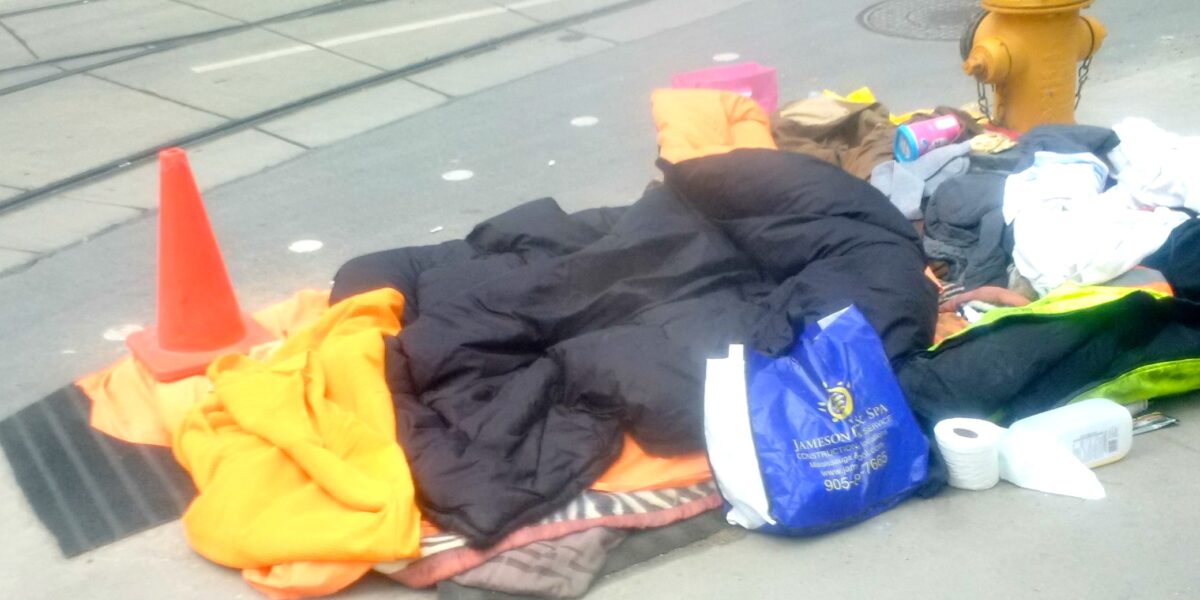The names Margaret Thatcher, Ronald Reagan and Brian Mulroney are often spoken together. They were the perpetrators of neoliberalism that promoted deregulation, the withdrawal from social programs and economic globalization beginning in the 1980s.
Since his death, Mulroney has been lionized. I won’t repeat the media headlines; the revisionist history is revolting.
Fortunately, truth is being told – including on the pages of rabble.ca, a good reason to subscribe (for free) if you ask me.
Author and activist Maude Barlow set the record straight on the touted success of Mulroney’s North American Free Trade Agreement (NAFTA) deal. In an opinion piece after his death she recounted how the free trade deal resulted in many U.S. corporations shutting their Canadian branch plants, relocating to Mexico, leaving hundreds of thousands of Canadian workers unemployed.
I saw that firsthand when Inglis workers began to arrive in a homeless shelter in the 1980s. I started reading the business section of newspapers and following trade agreements more closely to learn what was happening upstream that was leading to this downstream result – workers now homeless.
Author and activist Matthew Behrens similarly recounted the role national activism played to end apartheid, for which Mulroney has been credited as achieving. Behrens wrote on social media:
“If you were out there at the Royal York Hotel with Arts Against Apartheid picketers whenever someone who evaded the cultural boycott played there, you helped. If you were out front of Loblaws or LCBO boycotting South African products, you helped. If you helped out at the African National Congress offices on the Danforth in Toronto or were part of anti-apartheid groups involved in boycott, divestment, and sanctions (yes, that WAS a thing), you helped. If you were protesting in the streets, at Bata shoes, at the apartheid embassy, you did far more than Mulroney.”
I find this inspiring – to hear the truth of those social justice movement times.
Behrens also recirculated an important Globe and Mail article by Gerald Caplan titled ‘Canada and Nelson Mandela: the story behind the myth.’
On these rabble pages Judy Rebick has reminded us that Mulroney tried to re-criminalize abortion and Karl Nerenberg chronicles Mulroney’s privatization agenda which we should all remember included the sell-off of Connaught Laboratories leaving us without a superb home-made vaccine maker during the COVID pandemic.
I am compelled to revisit Mulroney’s role in destroying Canada’s robust and successful national housing program.
In many ways Mulroney was the architect of my career as a street nurse. I would have happily carried on working as a nurse practitioner in community health centres had homelessness not risen to a catastrophic level, so severe that Toronto Disaster Relief Committee (TDRC) declared homelessness a national disaster in 1998.
The initial slashing of funding for social programs including housing began in 1984 with the rise to power of the conservative Mulroney government.
1993 was a particularly dark year. In their last months in power Mulroney’s government presided over about $1.8 billion in cuts to housing programs including funds for any new co-op housing. A federal election that year brought in a Liberal government which continued with cuts to social spending, and Paul Martin’s 1996 budget cemented the downloading of housing.
Today, the legacy of Mulroney’s social policies lives on in our communities:
- 10 plus year wait lists for social housing
- decrepit apartment buildings with broken elevators, mould, infestations, and endless repair lists
- seniors and people with disabilities left waiting for accessible, safe housing and long-term care
- no co-op housing program (note the Liberals announced one two years ago but there are no details or dollars yet)
- mass homelessness, overflowing shelters, encampments, not created by an earthquake or flood but for the most part by men.
It was the renowned Ursula Franklin who made the point it is “a man-made disaster” at our TDRC press conference and we all understood that by men she was referencing Mulroney among others.
Maybe Mulroney had second thoughts about the devastation he helped to create.
In her PhD thesis Kaitlin Schwan writes that in 1988, former Prime Minister of Canada Brian Mulroney told a CBC-TV interviewer:
“In a country like ours it strikes me as completely offensive morally to have people sleeping on the bloody sidewalks. We have to collaborate in a great national effort to ensure that this doesn’t happen in a civilized country like Canada.”
Well, ‘this’ did happen, and I’m sorry if the former Prime Minister may have had to step over a body or two on a sidewalk but his government started the upstream attack on housing policies that can now be considered ‘social murder.’
If anything, the lesson from Mulroney’s death is to revisit and revitalize the national social movements that fought back against his government.
Selling toques won’t end homelessness.
Coldest night of the year fundraising walks won’t end homelessness.
Modular housing, laneway housing and inclusionary zoning will not end the housing crisis.
Sleeping cabins and tiny shacks are not housing.
Will Finance Minister Chrystia Freeland’s April 16 budget fully address the housing crisis or instead will we see it increase NATO funding?



